-
Designer
WOHA Architects
-
Client
Design Singapore Council
-
Location
Singapore
-
Scale
Building
-
Status
Built
-
Services
Biodiversity Survey & Impact Assessment, Ecosystem Service Assessment, Social Impact Assessment
-
Use
Mixed-use
-
Year
2023-2024
Nature-centric design assessment, Singapore
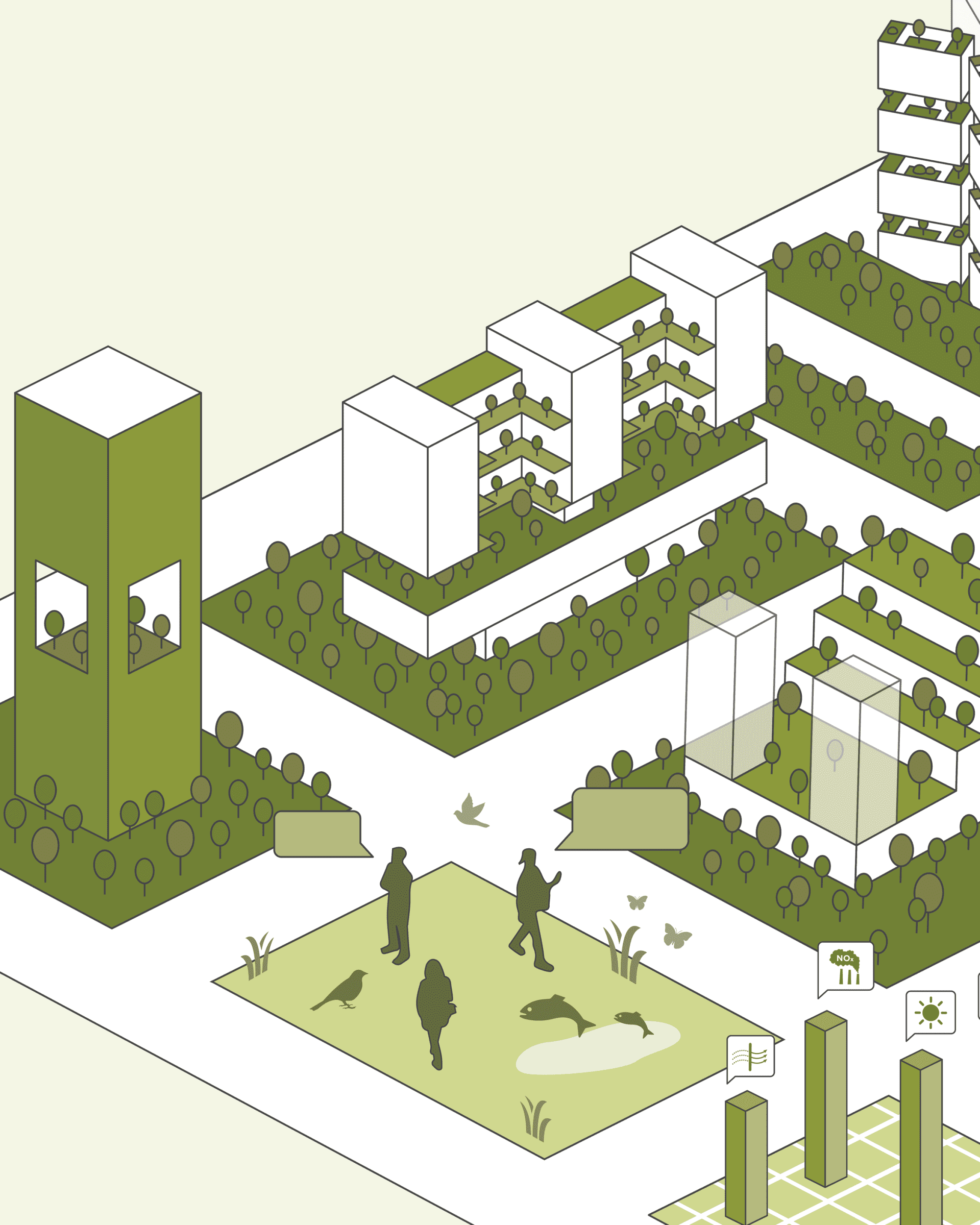
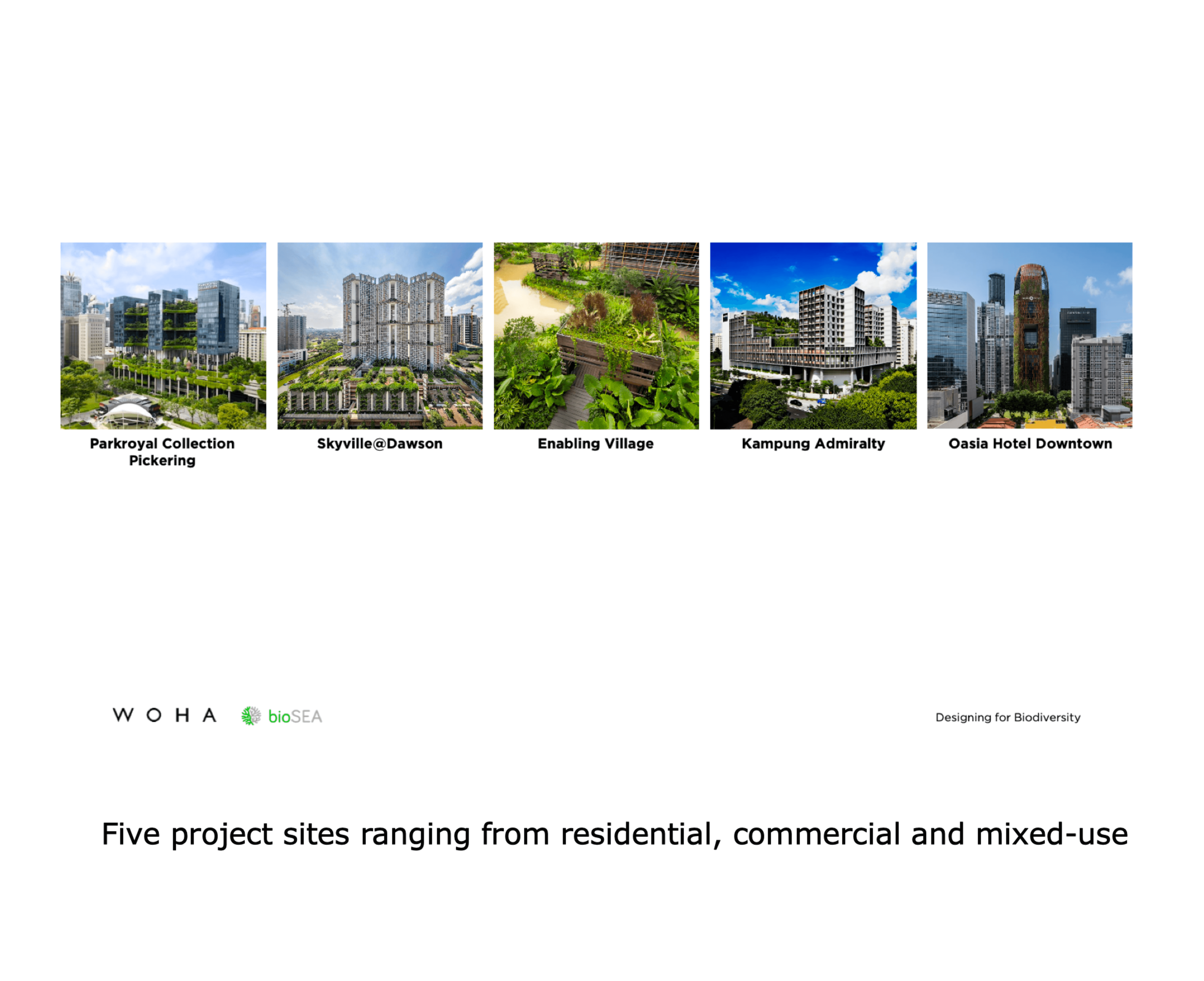
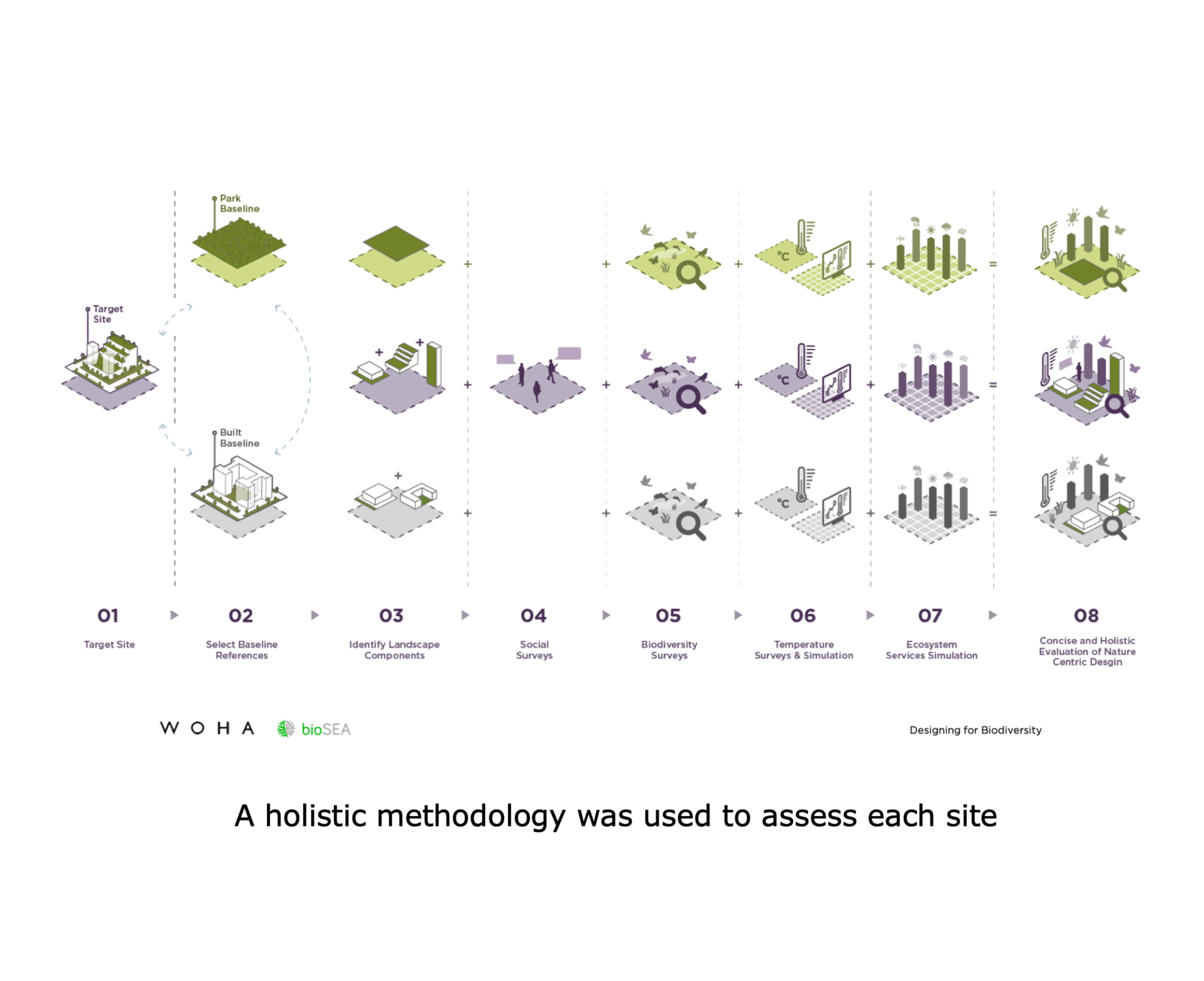
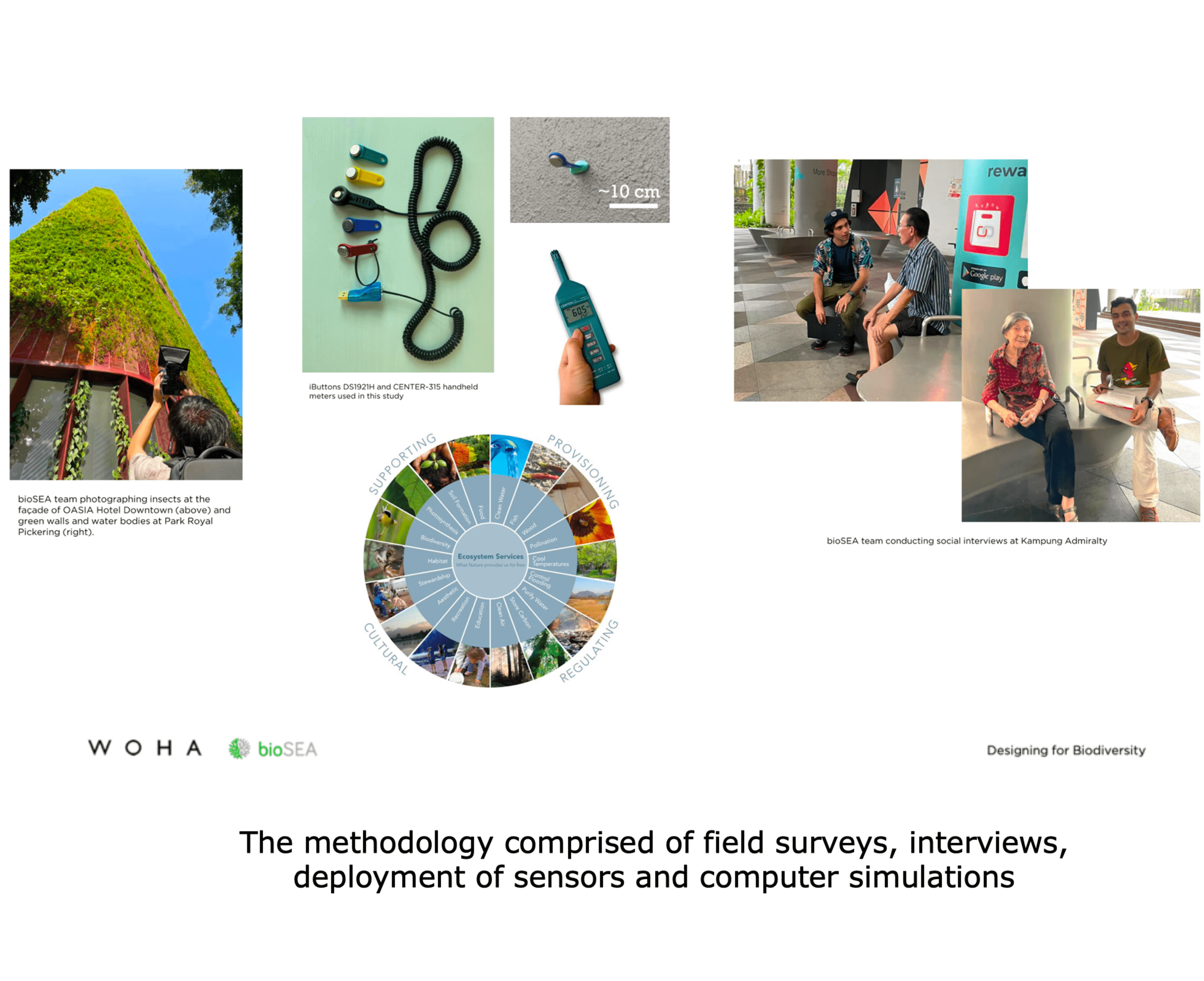
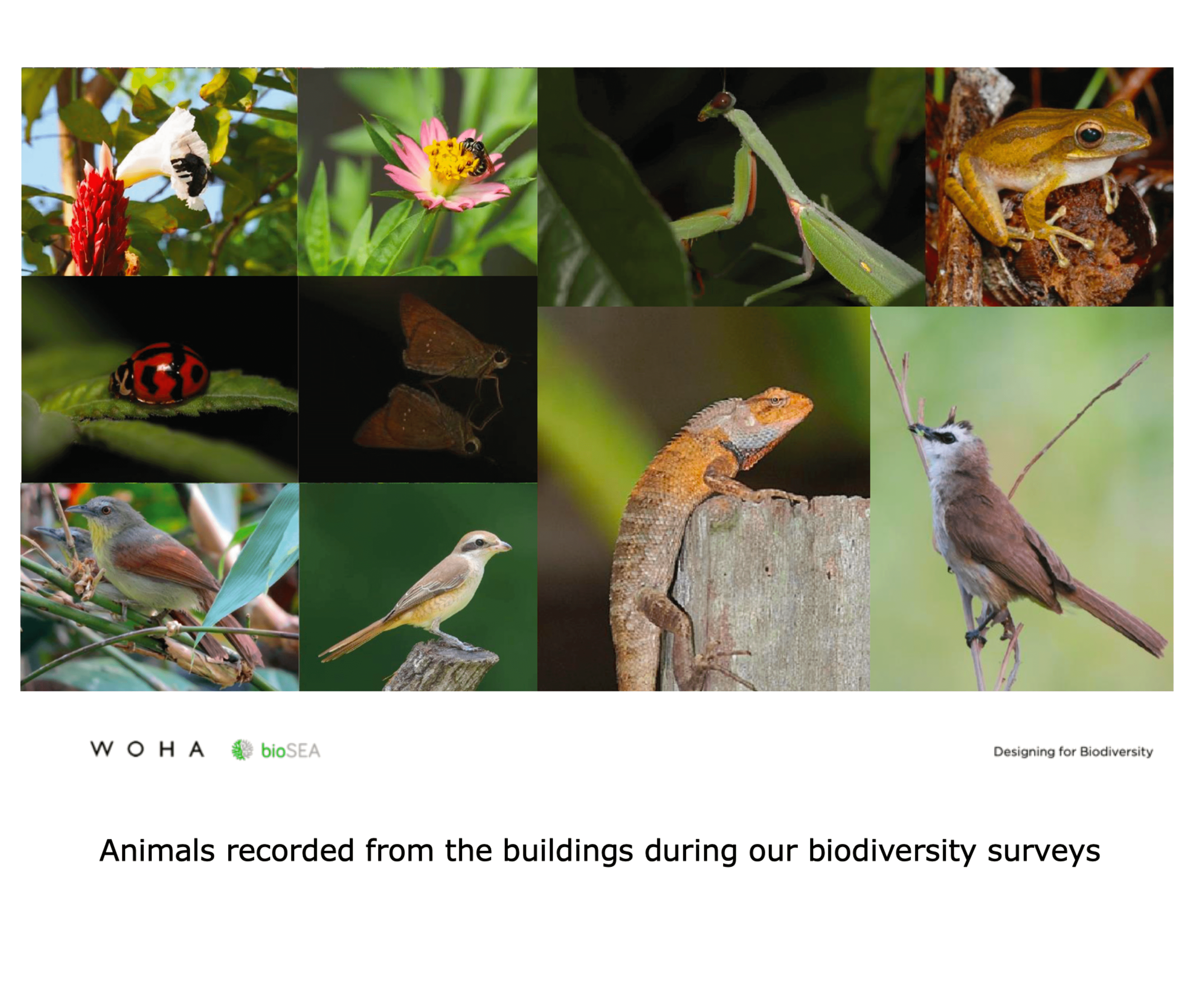
Project Summary
WOHA, in collaboration with bioSEA, was awarded a Good Design Research grant by the DesignSingapore Council to develop a framework to quantify and communicate the benefits of nature-centric design.
While the significance of landscape integrated architecture to the development of healthy cities, strong communities and rich urban space is well understood, the contribution of these green spaces to the biodiversity, thermal comfort and ecosystems services of our cities has been intuited but proven difficult to quantify.
Taking WOHA’s built works as test cases, bioSEA assessed the ecological and social significance of greenery integrated into 5 buildings, encompassing five notable building projects: OASIA Hotel Downtown, Park Royal Collection Pickering, Skyville@Dawson, Kampung Admiralty, and Enabling Village.
The bioSEA team conducted biodiversity surveys for key fauna groups covering both flying animals (such as birds, butterflies, dragonflies, beetles, and other insects and bats) as well as ground animals (such as reptiles and amphibians), aquatic fauna (such as fish) and mammals.
Social surveys were conducted at each site, involving a sample size of minimum 30 individuals. The objective was to gauge people’s perceptions of greenery and how it relates with social, cultural, recreational, aesthetic, and biodiversity values. For Parkroyal Collection Pickering, an interesting finding was that all of the hotel employees we surveyed shared that greenery and water features are important when planning for urban spaces, which is why employees chose to work there.
The cooling effects provided by vegetation were quantified using temperature and humidity sensors, generating data to elucidate the relationship between temperatures and locations with/without vegetation throughout the day. Ecosystem service evaluation tools like ESII and ENVI-met were deployed to quantify the carbon sequestration, air filtration, and solar heat reduction potential of greenery and water systems for the target projects.
Finally, bioSEA and WOHA Architects collaborated on an examination of how building typologies and integrated greenery patterns influence biodiversity across the five sites.
Ultimately, an evaluation tool was developed to enable a holistic and empirical understanding of the benefits of nature-centric design.
By sharing the analytical framework and tool here, bioSEA and WOHA hope to enable other practitioners to assess and to advocate the success of their own nature-centric designs.
